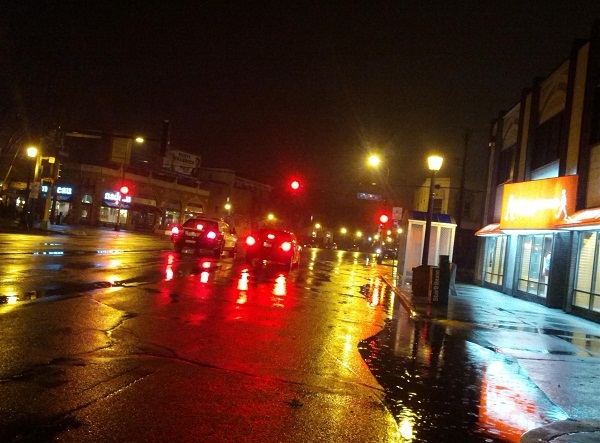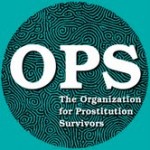The arts not only reflect our society, but also have the potential to re-shape it by raising awareness and inspiring action. We’re excited to launch “Culture Watch,” a new blog series examining how issues related to homelessness are portrayed in movies, TV series, music, visual art displays, stage plays and more.
Written by Perry Firth, graduate student in Seattle University’s Community Counseling program; graduate assistant, Project on Family Homelessness
It is not every day you watch a film that changes your perspective, and shifts the way you see your city.
But that is what “Eden,” directed by Megan Griffiths, has done for me and countless other viewers. It has also sparked this exploration into the very real relationship between homelessness and sex trafficking.
“Eden” traces the abduction and subsequent sexual trafficking of the protagonist Hyun Jae (Jamie Chung), a Korean-American teenage girl. Renamed Eden by her captors, the loss of her true name is only one dehumanizing act among many that she will endure.
Her horrifying descent into the world of slavery takes place in the areas outside of Las Vegas, Nevada, but was actually filmed in the dry plains of Eastern Washington. Trapped in the desert outside of Las Vegas, Hyun Jae is forced to work as a prostitute and is held captive with many other teenage girls in a warehouse. Both in and outside of this warehouse, all the girls are forced to endure the kind of torture that leaves long-lasting scars.
It was disturbing to see Eastern Washington, home of my family’s roots and the destination of many enjoyable road trips become the backdrop for the chronic abuse portrayed by the movie.
This contrast, of the hot, austerely beautiful Eastern Washington of my own trips with the reality that this area could very easily be the backdrop for another young woman’s forced prostitution, is, to put it mildly, disconcerting.

An important part of this film is watching Hyun Jae fight the dehumanization that is all around her. She watches girls mysteriously disappear, and must actively resist becoming indoctrinated into a culture where abuse is so prevalent that it becomes normal.
Hyun Jae ultimately begins to plot for her escape by slowly gaining the trust of her captors, biding her time till the moment comes when she can take advantage of the lapsed security their trust affords her.
I won’t say too much more about the film, because I believe that it is most powerful when the audience enters into it with relatively few ideas as to how it unfolds.
What you really need to know is that this drama is based on the true story of Chong Kim, who at the age of 18 was kidnapped and sexually trafficked from 1995 until her escape in 1997. This reality lends every scene in the movie a real urgency, and highlights the fact that sexual exploitation of girls and women is a human rights violation that has not spared the United States.
As a guest blogger for Firesteel, I am thankful for the opportunity provided by “Eden” to briefly discuss what sexual trafficking and homelessness have in common. The reality is that many young people are forced to flee their homes, often because of violence, horrific home conditions and chronic sexual abuse.
They are then left to fend for themselves on America’s streets, vulnerable, lost and unprotected. This opens the doors toward the kind of tough choices and exploitations that none of us, much less an adolescent girl or boy, should have to make. It also makes them easy targets for trafficking.
What is sex trafficking?
The official federal definition of sex trafficking is “the recruitment, harboring, transportation, provision, or obtaining of a person for the purposes of a commercial sex act, in which the commercial sex act is induced by force, fraud, or coercion, or in which the person induced to perform such an act has not attained 18 years of age (22 USC § 7102; 8 CFR § 214.11(a)).” From polarisproject.org.
Under this definition, much more than the kidnapping and subsequent slavery that we might normally think of constitutes sexual trafficking. Prostitution or being forced to exchange sex for food or shelter can also be a form of trafficking, particularly when it is a young person under 18 involved.
Sex trafficking in the U.S.
I’d like to give you some basic context:
- At a minimum, 28 percent of street youth have been forced to engage in survival sex.
- Within 48 hours of fleeing their home, one in three runaways will be manipulated into prostitution.
- Only 45 percent of homeless girls are not prostitutes/sexually exploited. Put another way, 55 percent of homeless girls are forced into prostitution
Moreover, according to the Washington State Office of the Attorney General, the average child enters prostitution and pornography at 12 years of age.
Now, compare that statistic to the fact that the average age of a runaway is 12-14. That the average age of entry into trafficking and the average of a runaway coincide is not accidental.
While Hyun Jae was not a runaway and was lucky to have stable and loving parents, the end result is the same as a child who was forced to flee the dangers in her home, only to be further victimized on the street: Years of sexual slavery, violence and trauma.
Sex trafficking happens in Seattle. It is happening now as I write this and it will still be happening as you read this. Hyun Jae is not alone in the atrocities she faces.
Seattle: How we stack up in preventing and responding to trafficking

First, we should acknowledge that Washington state has become a leader in terms of statewide laws it has enacted to prevent and prosecute trafficking.
For example, in 2002 Washington became the first state in the nation to create the Task Force Against Trafficking in Persons (HB 2381) which measures how well the state is preventing trafficking, identified supports for trafficking victims, and delivers feedback on better ways of meeting victims’ needs.
Also in 2002, Washington became the first state in the nation to create protections for mail-order brides being delivered to state residents by notifying them that they can examine their prospective spouses’ background check and marital history in their own language (SB 6412).
We have also gone on to implement other statewide protections and strengthen existing laws. Much of our state’s progress is owed to Senator Jeanne Kohl-Welles (D-36th), who is a longtime advocate for sexually exploited youth. After the screening of “Eden,” I was lucky enough to see a policy discussion on sexual trafficking, in which Senator Kohl-Welles took part. The list of bills she has pushed through to fight trafficking and support victims is five pages long.
Current legislation and policy decisions that are affecting the lives of sexually trafficked youth include:
- Enhanced penalties for people who use the internet to sexually exploit a minor (SB 5488).
- The creation of the Statewide Coordinating Committee on Sex Crimes (HB 1291). This committee, comprising of legislators, social service agencies that work with trafficking victims and other community agencies, has been charged with ensuring that the funds collected from trafficking crimes go to victims. Specifically, this bill directs that half of all fees and fines from sex crimes should go toward victim support services and preventative efforts.
Writing about the efforts of our state to combat trafficking inspires hope, but it is clear to me that our current legislative and policy decisions are not enough. In spite of our legislative efforts (and there are more which I have not included), sexual trafficking continues to happen here. There are many reasons for this, but is worth mentioning that the men who buy these youth need to stop. If the demand were to dry up, so would the supply.
YouthCare and the Bridge Program: National model for helping trafficked youth

I felt that an important part of writing this blog post would be to chronicle the local efforts taking place to help trafficked youth. To that end, I had the pleasure of talking with Liz Trautman, the marketing and communications coordinator for YouthCare about how YouthCare is helping sexually trafficked youth, and how the community can help in that battle.
YouthCare, located in northeast Seattle, is an organization dedicated to providing housing, emergency shelter, outreach, resources, education, employment training, and therapy to homeless youth ages 12 to 24.
With an estimated 1,000 youth homeless every night in Seattle, its services are needed.
YouthCare offers a variety of valuable services to the youth they engage with. Among these, the Bridge Program is YouthCare’s answer to the unique needs and lack of options for Seattle’s trafficked youth.
The Bridge Program was started in 2010 and is the only specialized service set up to help sexually exploited youth in Washington state. Today it acts as a national model on how best to provide services to a group of youth that our society has only recently begun to notice.
The Bridge Program recognizes that sexually exploited youth need many services, so they receive care above and beyond housing, like therapy and education (for example). They also employ a trauma-based counseling perspective, as well as a strengths-based model. This strengths-based model ensures the youth they serve focus on and build upon their own unique strengths and resiliency.

A call to action
Liz told me that we need to invest in community solutions, and understand who these young people are. They are of our community; these are not a separate group of kids. She went on to say that when kids are vulnerable because of abuse or neglect, because they have run away or are homeless, because they have a mental illness or are in foster care, they are at risk for sexual exploitation. It is what happens when our society does not do a good job of taking care of them and keeping them safe. This needs to be recognized, and action needs to be taken to keep these vulnerable young people safe. She also told me that organizations that work with these youth need support from the community.
With Liz’s community-based call to action in mind, what can the average person do to help these kids and the organizations that support them?
How can you help?
First, recognize that children are being trafficked in our community. No one is going to be helped if we don’t acknowledge that this is happening.
Then, going further then simple awareness of this problem, donate resources and time. YouthCare appreciates volunteers, and on their “Volunteer Opportunities” page you will find both individual and group volunteer activities. For more information, call (206) 204-1404.
Other action tips
1. Help homeless youth programs: Go to United Way’s All-Star Classic for Homeless Youth on June 15 from 1:30 p.m at Safeco Field.

This fun event will feature six softball innings with celebrities and sports star, giveaways, player interviews, a silent auction, youth videos and rousing music from The Young Evils post game. Sports stars who will join in this fight against homelessness include, but are not limited to, Mariner’s legends Jay Buhner and Dan Wilson, Supersonics great Gary Payton and Seahawks wide receiver Golden Tate. For all you music fans, Jeff Ament from Pearl Jam will also be there.
Tickets are $10 for regular admission (VIP tickets are $125), and all proceeds will go to programs that help homeless youth and youth at risk for homelessness.
2. Help victims of trafficking: I would also like to mention the Organization for Prostitution Survivors (OPS). OPS is an organization that is committed to helping women who have been prostitutes or are prostitutes.
As many prostitutes start in ‘the life’ under 18, and are subjected to violence, rape, and extreme methods of control by pimps, OPS and the work they do has a real place within the broader discussion of sexual trafficking.

OPS approaches the issue of sex trafficking and prostitution from a variety of angles. They offer art workshops and weekly support groups to survivors. In an effort to attack the issue from the ‘demand’ side, they facilitate Men’s Accountability groups. They also engage in community education efforts.
OPS is also working toward building a memorial for the victims of the Green River Killer, Gary Ridgway. Many of Ridgway’s victims were under 18, and had either been trapped into the life of prostitution or were runaways. Those girls he killed who were under 18 and prostitutes were also trafficking victims, if you recall the definition of sex trafficking.
Other important work is being done by the Washington Anti-Trafficking Response Network (WARN). WARN is a collaboration of non-governmental agencies that has been providing aid and direct service to victims of trafficking since 2004. Examples of the important level of care they deliver to their clients include case management, safe housing, food and clothing, immigration and legal assistance, victim rights advocacy, physical and mental health treatment, and education and job training. Their clients receive all of these services for free.
A word on advocacy
Policy matters, and advocacy drives policy. Remember those paragraphs earlier in this blog about recent legislation designed to help trafficking victims? I was able to write those paragraphs because concerned citizens and organizations advocated for more protections for sex trafficking victims, and more punishment for sex traffickers.
There is no reason you can’t join that group of concerned citizens. Legislators work for you, and they therefore care about the same things you do. You just have to let them know what you think matters.
Educate yourself, and then speak out about what you’ve learned. Share what you’ve learned with your friends and community, and watch your message grow in strength.
More to come
Later this year, Firesteel will be running a series on sexually exploited youth and homelessness. I hope this blog will galvanize further reading, and most importantly, action.
The question becomes whether we are willing to accept this in our city. Now that you have read this, what are you going to do?
“Eden” is available for viewing on Amazon and iTunes.
Have you seen “Eden?” What were your impressions?
